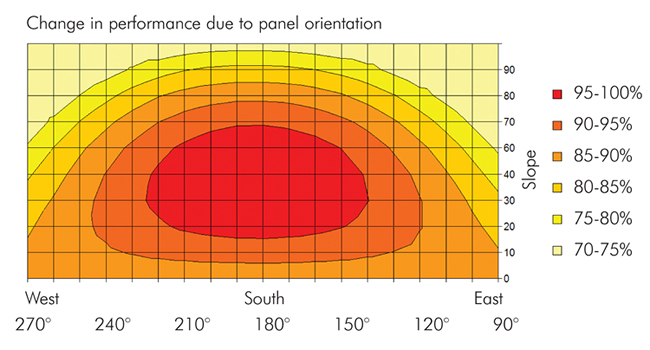To optimize the production of solar panels, one of the most investigated aspects is the relation between solar yield with orientation and inclination. The optimal inclination to exploit the maximum solar irradiation is mainly a matter of solar geometry: it depends on the latitude of the location. But is it solar design just a geometrical problem? If for conventional solar installation it is so, the issue for building integrated solar technology is not about maximizing the amount of energy: it is about designing a dynamic building envelope ensuring on-site renewable energy generation to make the building nearly-zero or plus-energy.
Further the orientation of the installation is from the south, the more its production will be affected. Source: unknown.
Solar panels installed vertically produce less energy at central-Europe latitudes. For BIPV systems mounted vertically on the facade, the efficiency is about 70% if facing south, while it will drop to 50% if facing east or west. So, does a facade installation still make sense energetically?



